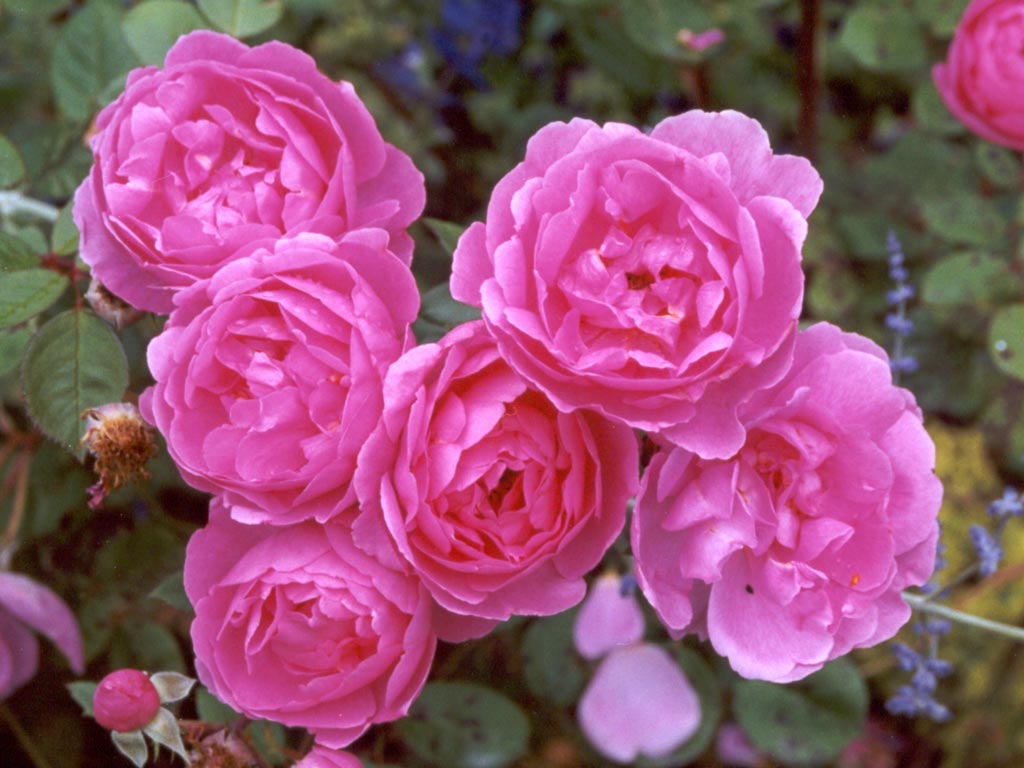A Rose By Any Other Name...
Spring Rose Care

 Hello! I found this Rose care article on a Awesome site called Garden Guides!! It has everything you can imagine about gardening and taking care of your plants!! I was a little surprised by this article..well I guess I really shouldn't have been..but the things is I do my rose pruning all backwards..or maybe even wrong??? Oh My!! But I've had roses for many years and have been taking care of them the same way and have never experienced a problem. My roses are huge..sometimes too huge. I should make note here that roses are one of my favorite perennials because they last forever and grow larger and larger each year. My grandmothers house still has roses growing she planted 25 years ago..I especially like trailing roses on a beautiful white arbor..lovely.. My normal process is I prune the roses back in the fall when I put the garden to bed. I usually cut all the dead plant material away and add a bit of mulch on most of my perennials. I do this to my roses as well. In the spring the roses always start growing with avenges and do very well in the spring-fall months. I care for my roses all summer with weekly deadheading and fertilizing treatments. But perhaps I should try this way..it is after all correct?? Maybe there are many ways of doing things and it all turns out ok!!
Hello! I found this Rose care article on a Awesome site called Garden Guides!! It has everything you can imagine about gardening and taking care of your plants!! I was a little surprised by this article..well I guess I really shouldn't have been..but the things is I do my rose pruning all backwards..or maybe even wrong??? Oh My!! But I've had roses for many years and have been taking care of them the same way and have never experienced a problem. My roses are huge..sometimes too huge. I should make note here that roses are one of my favorite perennials because they last forever and grow larger and larger each year. My grandmothers house still has roses growing she planted 25 years ago..I especially like trailing roses on a beautiful white arbor..lovely.. My normal process is I prune the roses back in the fall when I put the garden to bed. I usually cut all the dead plant material away and add a bit of mulch on most of my perennials. I do this to my roses as well. In the spring the roses always start growing with avenges and do very well in the spring-fall months. I care for my roses all summer with weekly deadheading and fertilizing treatments. But perhaps I should try this way..it is after all correct?? Maybe there are many ways of doing things and it all turns out ok!!Overview
Roses require springtime care to promote
healthy plants and blooms in the summer. The year-round care of these beautiful
plants begins with uncovering and pruning the plant. Spring also provides the
perfect opportunity to apply protective mulches to protect tender roots.
Existing roses require application of fertilizers in the spring to encourage the
established plants to produce new growth.
Removal of Winter Protection
Remove mulch and soil layers applied
around the base of the plant to protect it from winter's cold. Pull the mulch
carefully away from the crown (base of main stem) of the rose plant and spread
the material evenly through the garden bed. Clean up plant debris around the
rose, if you haven't yet performed this chore, to limit disease
transmission.
Pruning
A newly awakened rose bush thrives from a
good spring pruning. Limit pruning at any other time of the year to areas
absolutely requiring trimming. Deadhead flowers and remove dead or diseased
branches only. Save the heavy pruning for the spring. Roses benefit from removal
of dead or dried canes and from the general thinning of stem removal to allow
increased light to reach the interior of the plant. Clip canes about 1/4 inch
above an outward facing bud at a 45-degree angle. Leave three to five healthy
canes to retain the healthy shape of a moderately sized plant.
Fertilizing
Established rose plants require
fertilization a few times each year to continue flower production. Fertilize in
the spring with a
rose-specific fertilizer in granular or liquid form. Apply fertilizer after
pruning based on the recommendations on the packaging. Roses will benefit from
two additional fertilizer applications scheduled in early and late summer.
Watering
Most healthy plants require 1 inch of
water per week to produce plenty of blooms. Keep an eye on the weather to gauge
rainfall amounts and the possible need for supplemental watering. Water rose
plants at the soil level around the base of the main stem.
Mulch
Roses also benefit from a protective layer
of mulch spread onto the planting bed. Mulch improves water retention and
protects roots from the heat of bright sunshine. Apply an even 2-inch layer of
mulch to the garden bed and avoid mounding mulch around the base of the
rose.
Comments
Post a Comment